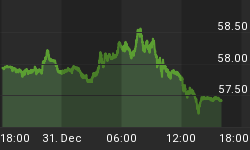Think recessions begin when GDP is negative? Think 2 quarters of negative growth are required to start a recession?
If you believe either of those, you are wrong.
The NBER is the official arbiter of recessions in the US. Here's a list of US Business Cycle Expansions and Contraction Dates by the NBER.
Using start dates I created the following chart.
Recession Starting Dates vs. GDP

NBER FAQs
The NBER has a list of Business Cycle Dating Procedure: Frequently Asked Questions that inquiring minds may wish to read. This is a partial list:
Q: The financial press often states the definition of a recession as two consecutive quarters of decline in real GDP. How does that relate to the NBER's recession dating procedure?
A: Most of the recessions identified by our procedures do consist of two or more quarters of declining real GDP, but not all of them. In 2001, for example, the recession did not include two consecutive quarters of decline in real GDP. In the recession beginning in December 2007 and ending in June 2009, real GDP declined in the first, third, and fourth quarters of 2008 and in the first quarter of 2009. The committee places real Gross Domestic Income on an equal footing with real GDP; real GDI declined for six consecutive quarters in the recent recession.
Q: Why doesn't the committee accept the two-quarter definition?
A: The committee's procedure for identifying turning points differs from the two-quarter rule in a number of ways. First, we do not identify economic activity solely with real GDP and real GDI, but use a range of other indicators as well. Second, we place considerable emphasis on monthly indicators in arriving at a monthly chronology. Third, we consider the depth of the decline in economic activity. Recall that our definition includes the phrase, "a significant decline in activity." Fourth, in examining the behavior of domestic production, we consider not only the conventional product-side GDP estimates, but also the conceptually equivalent income-side GDI estimates. The differences between these two sets of estimates were particularly evident in the recessions of 2001 and 2007-2009.
Q: Typically, how long after the beginning of a recession does the BCDC declare that a recession has started? After the end of the recession?
A: The committee's determination of the peak date in December 2007 occurred 11 months after that date and the committee's action in determining the trough date of June 2009 occurred 15 months after that date. Earlier determinations took between 6 and 21 months. There is no fixed timing rule. The committee waits long enough so that the existence of a peak or trough is not in doubt, and until it can assign an accurate peak or trough date.
Q: Has the NBER previously determined a trough date prior to the time when economic activity surpassed its previous peak?
A. Yes, the NBER has done this before. For example, on July 8, 1983, the committee announced that a trough had occurred in November 1982 before real GNP had exceeded its 1981 third quarter peak.
Also consider Economists Scramble to Reassess Recession Odds.
















